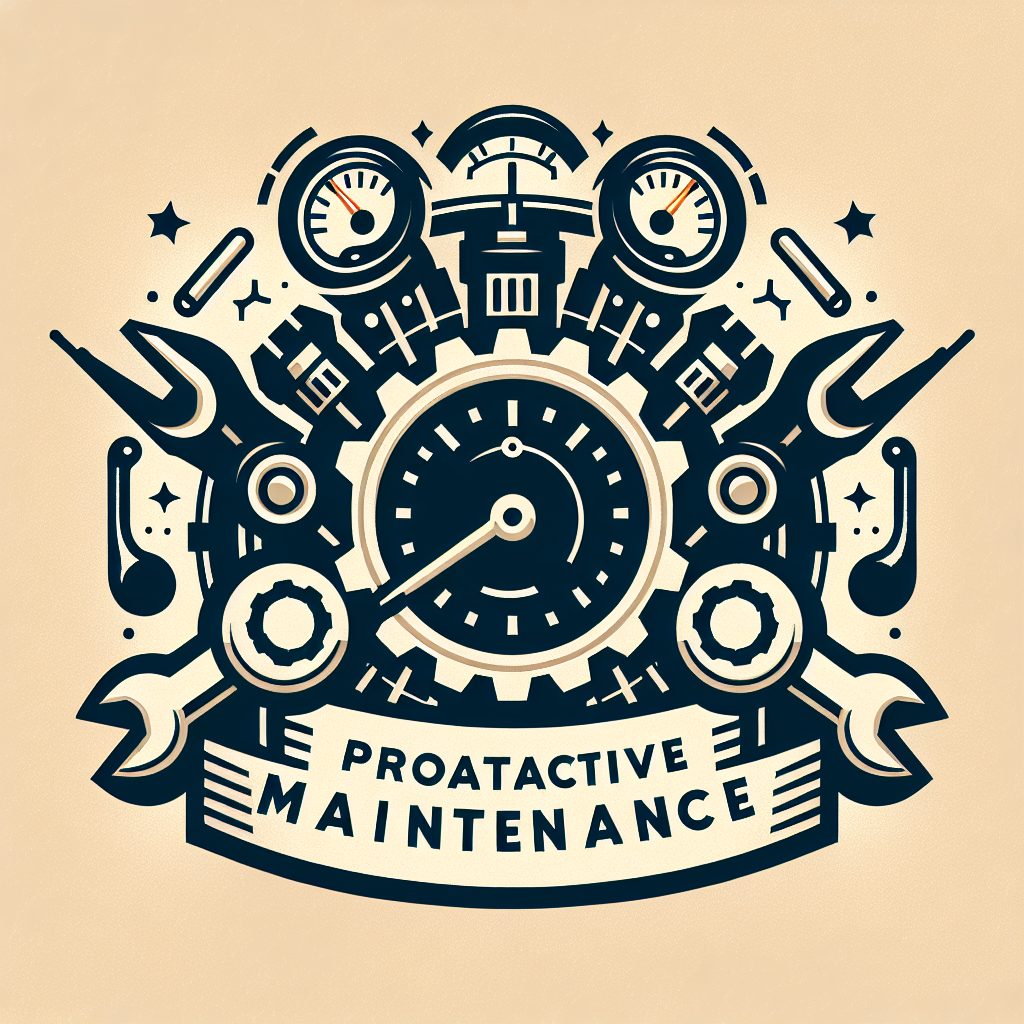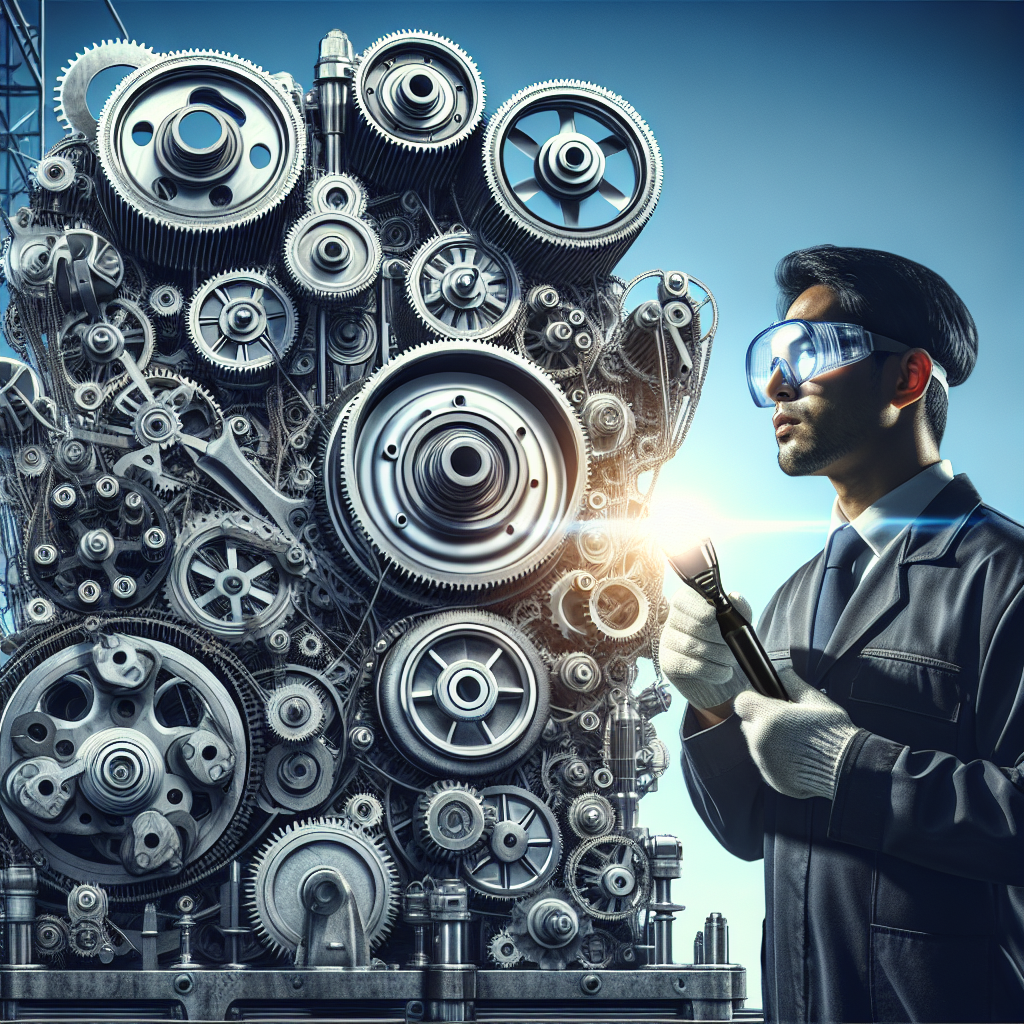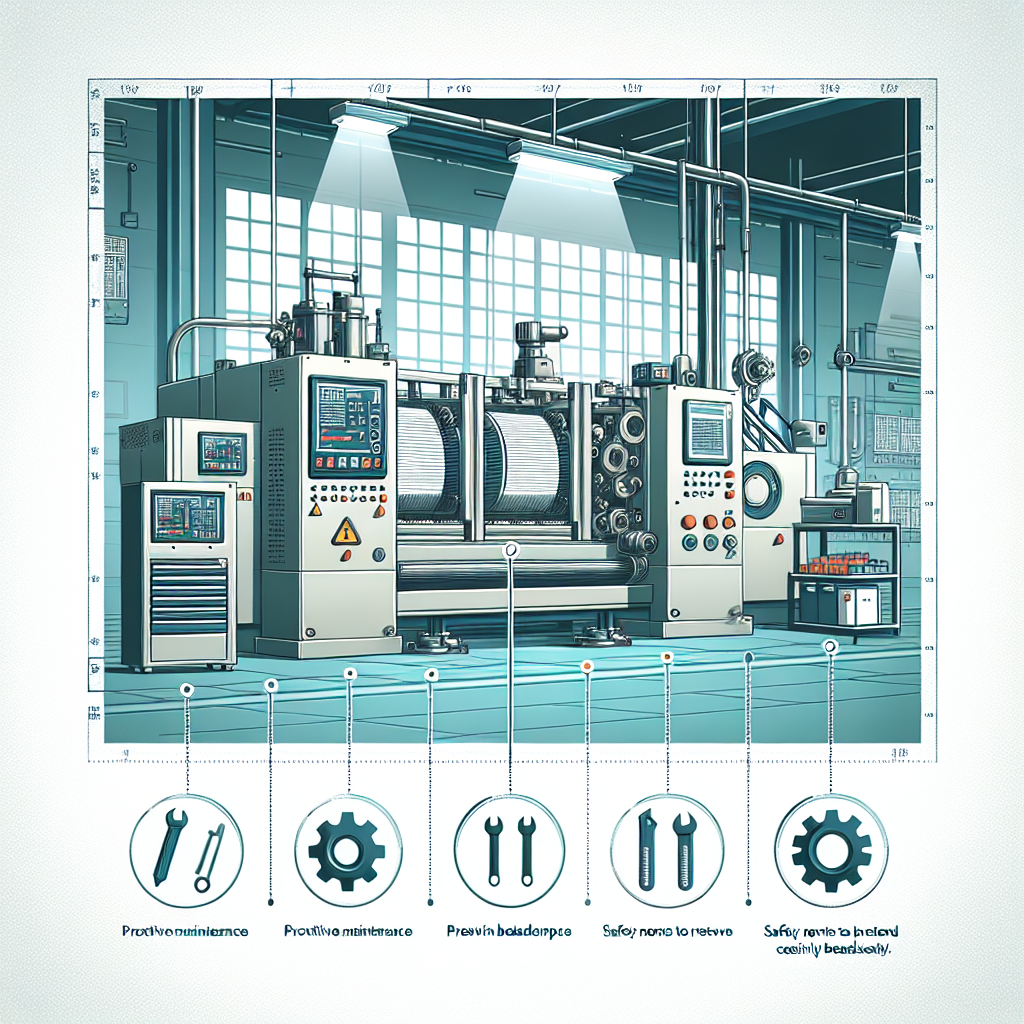Your cart is currently empty!
Tag: Breakdowns

Proactive Maintenance: A Key Strategy for Preventing Costly Breakdowns
Proactive maintenance is a key strategy for preventing costly breakdowns in any industry. By taking a proactive approach to maintenance, businesses can avoid the high costs associated with unexpected equipment failures and downtime. Instead of waiting for something to break before taking action, proactive maintenance involves regularly monitoring and maintaining equipment to prevent issues from occurring in the first place.One of the main benefits of proactive maintenance is that it helps businesses avoid costly repairs and replacements. When equipment is regularly inspected and maintained, small issues can be identified and addressed before they escalate into larger, more expensive problems. This can save businesses a significant amount of money in the long run, as they won’t have to deal with the high costs of emergency repairs or replacements.
In addition to cost savings, proactive maintenance also helps businesses improve their overall efficiency and productivity. When equipment is properly maintained, it is less likely to break down unexpectedly, leading to less downtime and disruption to operations. This can help businesses meet their production goals and deliver products and services to customers on time.
Another benefit of proactive maintenance is that it can help businesses extend the lifespan of their equipment. By regularly monitoring and maintaining equipment, businesses can ensure that it continues to operate at peak performance for a longer period of time. This can help businesses maximize their return on investment and get the most out of their equipment.
Implementing a proactive maintenance program involves creating a schedule for regular inspections and maintenance tasks, as well as training staff on how to properly care for equipment. Businesses can also use technology, such as predictive maintenance tools, to help identify potential issues before they occur. By making proactive maintenance a priority, businesses can prevent costly breakdowns and keep their operations running smoothly.
In conclusion, proactive maintenance is a key strategy for preventing costly breakdowns in any industry. By regularly monitoring and maintaining equipment, businesses can avoid the high costs associated with unexpected failures and downtime. Proactive maintenance can also help businesses improve efficiency, extend the lifespan of their equipment, and maximize their return on investment. By making proactive maintenance a priority, businesses can protect their bottom line and ensure the smooth operation of their operations.

The Importance of Proactive Maintenance in Preventing Costly Breakdowns
No business owner wants to deal with costly breakdowns that can disrupt operations and lead to expensive repairs. That’s why it’s essential to prioritize proactive maintenance to prevent breakdowns before they occur. By taking a proactive approach to maintenance, businesses can save time, money, and headaches in the long run.Proactive maintenance involves regularly inspecting and maintaining equipment to identify and address potential issues before they lead to breakdowns. This proactive approach can help businesses avoid unexpected downtime, costly repairs, and lost revenue due to equipment failures. Here are some reasons why proactive maintenance is so important in preventing costly breakdowns:
1. Increased equipment reliability: Regular maintenance can help identify and address potential issues early on, preventing them from escalating into major breakdowns. By keeping equipment in good working condition, businesses can rely on their machinery to perform efficiently and effectively, reducing the risk of unexpected failures.
2. Extended equipment lifespan: Proactive maintenance can help prolong the lifespan of equipment by ensuring that it is properly maintained and serviced on a regular basis. By taking care of equipment proactively, businesses can avoid premature wear and tear that can lead to costly repairs or replacements.
3. Improved safety: Regular maintenance can help ensure that equipment is operating safely and in compliance with regulations. By proactively addressing safety concerns, businesses can prevent accidents, injuries, and potential liability issues that can arise from equipment failures.
4. Cost savings: While proactive maintenance requires an investment of time and resources, it can ultimately save businesses money in the long run. By preventing costly breakdowns, businesses can avoid the expenses associated with emergency repairs, downtime, and lost productivity.
5. Enhanced productivity: When equipment is properly maintained and operating at peak performance, businesses can maximize their productivity and efficiency. By proactively addressing maintenance issues, businesses can avoid disruptions that can slow down operations and impact their bottom line.
In conclusion, proactive maintenance is essential for businesses looking to prevent costly breakdowns and keep their operations running smoothly. By investing in regular maintenance and inspections, businesses can increase equipment reliability, extend equipment lifespan, improve safety, save costs, and enhance productivity. Ultimately, prioritizing proactive maintenance is a smart investment that can help businesses avoid the headaches and expenses associated with unexpected equipment failures.

Tips for Preventing Data Center Failures and Breakdowns
Data centers are the backbone of modern businesses, housing critical IT infrastructure and storing vast amounts of data. Any downtime or failure in a data center can have serious consequences, leading to lost revenue, damaged reputation, and compromised data security. To prevent such disasters, it is essential to implement measures that can mitigate the risk of failures and breakdowns. Here are some tips for preventing data center failures and breakdowns:1. Regular maintenance and monitoring: Regular maintenance of data center equipment is crucial to ensure its proper functioning. This includes inspecting and testing hardware components, updating software, and monitoring performance metrics. By keeping a close eye on the health of your data center infrastructure, you can identify and address potential issues before they escalate into full-blown failures.
2. Implement redundancy: Redundancy is key to ensuring high availability in data centers. By implementing redundant power supplies, cooling systems, and network connections, you can minimize the impact of hardware failures and ensure uninterrupted operation. Redundancy also extends to data storage, with backups and replication strategies in place to protect against data loss.
3. Disaster recovery planning: In the event of a catastrophic failure, having a comprehensive disaster recovery plan can help minimize downtime and data loss. This includes regular backups, failover systems, and a clear protocol for restoring operations in the event of a disaster. Regularly test your disaster recovery procedures to ensure they are effective and up-to-date.
4. Temperature and humidity control: Proper environmental conditions are essential for the optimal operation of data center equipment. Ensure that your data center is maintained at the right temperature and humidity levels to prevent overheating and equipment failures. Use monitoring systems to track environmental conditions and take corrective action if necessary.
5. Staff training and education: Invest in training and educating your data center staff on best practices for maintaining and operating data center equipment. Properly trained staff can identify potential issues early on and take proactive measures to prevent failures. Encourage a culture of accountability and responsibility among your team members to ensure that everyone is committed to maintaining the reliability of the data center.
6. Regular audits and assessments: Conduct regular audits and assessments of your data center infrastructure to identify vulnerabilities and areas for improvement. This includes reviewing security protocols, compliance with industry standards, and the overall health of your IT systems. Address any issues identified during audits promptly to prevent potential failures in the future.
By implementing these tips for preventing data center failures and breakdowns, you can safeguard the integrity and availability of your critical IT infrastructure. Investing in proactive measures to maintain the health and reliability of your data center will pay off in the long run, helping to ensure the smooth operation of your business and protect against costly downtime.

Why Proactive Maintenance is Key to Preventing Costly Breakdowns
Proactive maintenance is a crucial aspect of keeping equipment and machinery in optimal working condition. By regularly inspecting, servicing, and repairing equipment before it breaks down, businesses can prevent costly and unexpected breakdowns that can disrupt operations and lead to expensive repairs. In this article, we will discuss why proactive maintenance is key to preventing costly breakdowns and how it can benefit businesses in the long run.One of the main reasons why proactive maintenance is essential is that it helps identify and address potential issues before they escalate into major problems. By conducting regular inspections and servicing, maintenance technicians can detect early signs of wear and tear, corrosion, or malfunctioning components. By addressing these issues promptly, businesses can prevent equipment failures and costly breakdowns that can result in downtime and lost productivity.
Proactive maintenance also helps extend the lifespan of equipment and machinery. By keeping equipment properly maintained and serviced, businesses can ensure that their assets are operating at peak performance levels. This can help reduce the frequency of breakdowns and the need for costly repairs or replacements. In the long run, proactive maintenance can help businesses save money on maintenance costs and prolong the lifespan of their assets.
Furthermore, proactive maintenance can improve workplace safety. Regular inspections and servicing can help identify and address potential safety hazards, such as faulty electrical wiring, leaking fluids, or worn-out components. By addressing these issues promptly, businesses can create a safer working environment for their employees and reduce the risk of accidents or injuries.
Another benefit of proactive maintenance is that it can help businesses comply with industry regulations and standards. Many industries have specific maintenance requirements and guidelines that businesses must adhere to in order to ensure the safety and reliability of their equipment. By implementing a proactive maintenance program, businesses can stay ahead of regulatory requirements and avoid costly fines or penalties for non-compliance.
In conclusion, proactive maintenance is key to preventing costly breakdowns and ensuring the smooth operation of equipment and machinery. By conducting regular inspections, servicing, and repairs, businesses can detect and address potential issues before they escalate into major problems. Proactive maintenance can help extend the lifespan of equipment, improve workplace safety, and ensure compliance with industry regulations. Overall, investing in proactive maintenance can help businesses save money, reduce downtime, and increase productivity in the long run.

The Benefits of Proactive Maintenance: How to Prevent Costly Breakdowns
Proactive maintenance is a crucial aspect of ensuring the longevity and efficiency of any equipment or machinery. By taking a proactive approach to maintenance, businesses can prevent costly breakdowns and minimize downtime, ultimately saving time and money in the long run.One of the key benefits of proactive maintenance is that it allows businesses to identify and address potential issues before they escalate into major problems. By conducting regular inspections and maintenance tasks, such as lubricating moving parts or replacing worn-out components, businesses can prevent equipment malfunctions and breakdowns. This proactive approach helps to maintain the reliability and performance of equipment, reducing the risk of unexpected downtime and costly repairs.
Another advantage of proactive maintenance is that it can extend the lifespan of equipment. By keeping equipment well-maintained and addressing minor issues promptly, businesses can prolong the life of their machinery and avoid the need for premature replacements. This not only saves money on purchasing new equipment but also reduces the environmental impact of disposing of old machinery.
In addition to preventing breakdowns and extending equipment lifespan, proactive maintenance can also improve overall operational efficiency. Well-maintained equipment operates more smoothly and efficiently, leading to increased productivity and reduced energy consumption. By keeping equipment in optimal condition, businesses can maximize their output and minimize operational costs.
Furthermore, proactive maintenance can help businesses comply with safety regulations and prevent workplace accidents. Regular maintenance inspections can identify potential hazards and ensure that equipment meets safety standards, reducing the risk of accidents and injuries in the workplace. By prioritizing safety through proactive maintenance, businesses can create a safer work environment for their employees and avoid costly legal consequences.
In conclusion, proactive maintenance is a valuable investment for businesses looking to prevent costly breakdowns and optimize the performance of their equipment. By implementing a proactive maintenance strategy, businesses can reduce downtime, extend equipment lifespan, improve operational efficiency, and enhance workplace safety. Ultimately, the benefits of proactive maintenance far outweigh the costs, making it a worthwhile investment for any business looking to maximize productivity and minimize expenses.
